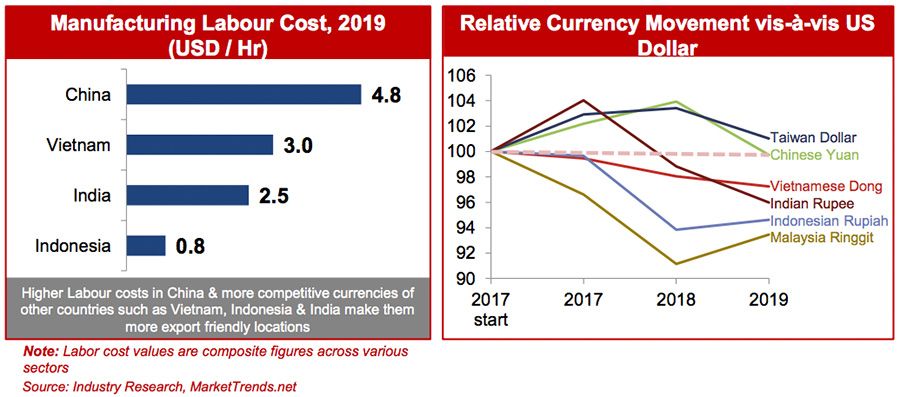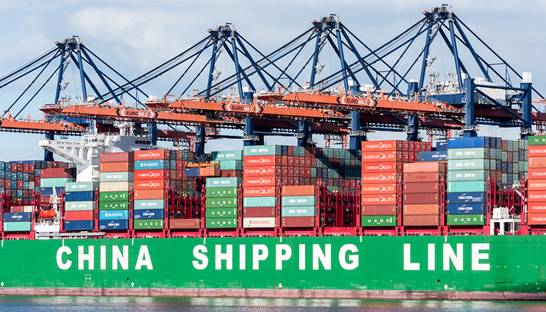China has in recent decades grown into one of the most important nodes of global supply chains. But now, learnings from Covid-19 show that it may be sensible to de-risk and diversify supply chains away from China, according a new report from Avalon Consulting.
In a vision paper, the management consultancy describes how China has become the “factory of the world” over the last thirty years, driven by the country’s advanced infrastructure, low cost labour market and the advent of business-friendly regulations. By 2018, China’s share in the global manufacturing GDP was nearly 30 per cent.
While this was a favourable scenario for all, the Covid-19 crisis has put in sharp focus the drawbacks of having a supply chain that is heavily dependent on a single market. The outbreak of the crisis and the subsequent lockdown of Wuhan and other provinces caused significant disruption to manufacturing supply chains across the globe.
According to Avalon Consulting, this scenario calls for an overall reflection on supply chain structures, not only with respect to China. Supply chains need to be reevaluated in the context of modern market scenarios and capabilities.
“You need an agile supply chain strategy which can respond proactively to changing cost structures across suppliers and countries as well as emerging country-level risks including trade agreements and barriers etc,” wrote Jaldeep Sodhi and Abhimanyu Roy at Avalon Consulting.
The call for the “de-risking” of supply chains across the globe. A large part of this will be a balancing of global supply chains, with a shift away from reliance on China. Examples of this have already emerged. Earlier this year, CNBC reported that global tech giants Apple, Microsoft and Google are all developing plans to move production away from China, which signifies a dramatic change in supply chain structures.

The alternative for many markets has been to minimise risk by condensing their supply chains within a shorter radius, in some cases even within the market. Sodhi and Roy point to the intensification of the “Make America Great Again” message in the US and efforts to ramp up the “Make in India” efforts in India as examples of how many countries are turning to their domestic markets to fill the supply chain gap.
Countries are seeing this as an opportunity to boost local manufacturing capabilities. This is not only to meet their own supply needs, but in the case of some Asian economies such as Vietnam, Thailand, Malaysia, India and others, bolstering local manufacturing makes them an attractive alternative to China.
These markets were already in the process of developing their production capacity, which intensified when the US and China began their trade war in 2019. “The US-China trade war is still ongoing, even if it has moved off the front pages of newspapers, with tariffs remaining in place on both sides. Even if there are relaxations in future (e.g. in a non-Trump administration) it is unlikely to revert to the pre-Trade War levels,” wrote Sodhi and Roy.
Nevertheless, given the strong reliance on China at present, Avalon Consulting indicates that a complete shift away from China is neither possible nor advisable. Sodhi and Roy stated that “the big picture is not of a complete abandonment of China but of a calibrated diversification towards other countries and suppliers. This should be based on a systematic evaluation of costs and risks at a country and supplier level.”
They put forth five considerations when planning supply chain diversification. First, it is important to compare costs of operating within China and in other markets to see what is more feasible. The next step is a comprehensive risk assessment of the current supply chain, not only at the county level, but also an individual evaluation of risks for every business’ specific suppliers.
Third, a number of new Free Trade Agreements are popping up in various regions, and it is worth having a look at the new opportunities that these agreements can present. Once these three steps have been taken, planning can begin on a supply chain model and the markets through which it should pass.
Once this is done, the fifth step is a more comprehensive overhaul of the supply chain model to shore it up against future disruption from incidents such as trade wars and global pandemics. Supply chains need to be made nimble and agile to thrive in the current environment, according to Sodhi and Roy of Avalon Consulting.


